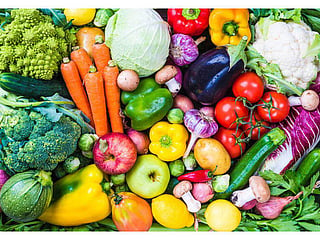“When we talk about a whole foods, plant-based diet, we mean the majority (at least 80% to 90%) of the food should be unprocessed plant-based foods — things like legumes, fruits, vegetables, seeds, whole grains and nuts,” Dr. Urvi Shah, a hematologist oncologist at Memorial Sloan Kettering Cancer Center, said in a recent blog post.
Fruits, vegetables, grains, dairy, seeds, fish and meat that contain a variety of micronutrients (vitamins and minerals) and macronutrients (protein, carbohydrates and fat) should be included in a plant-based diet, according to a perspective published in the journal Advances in Nutrition.


